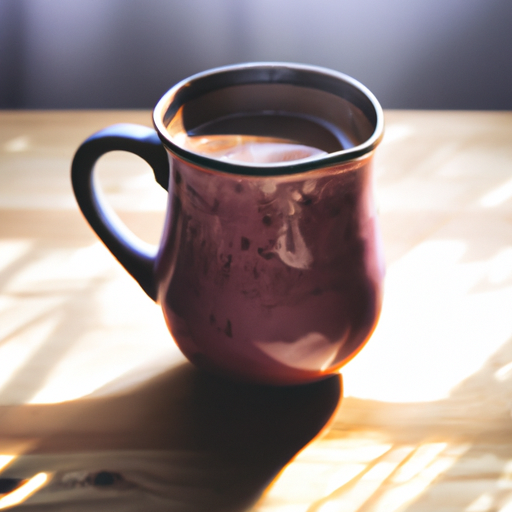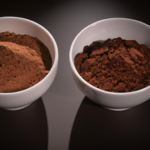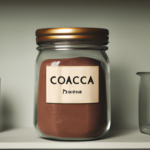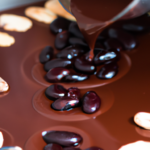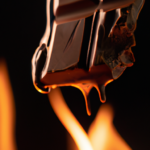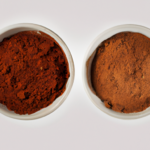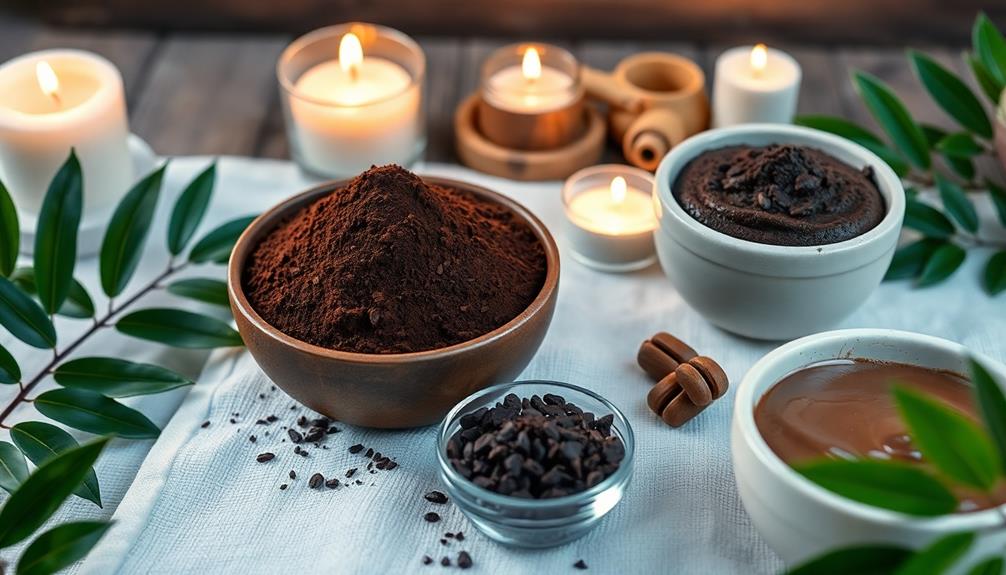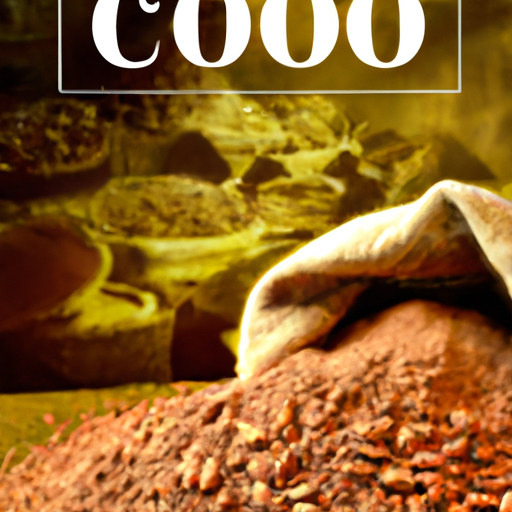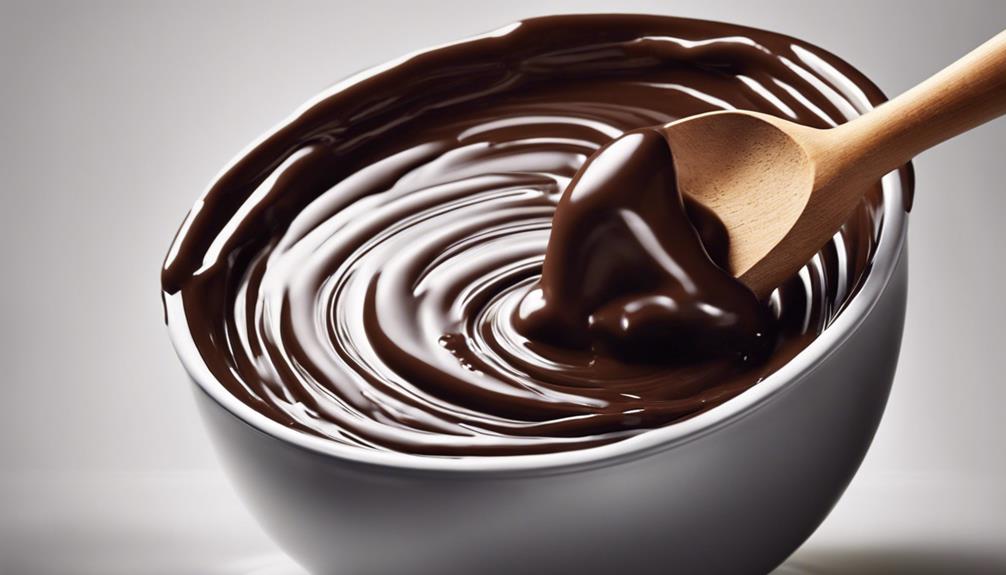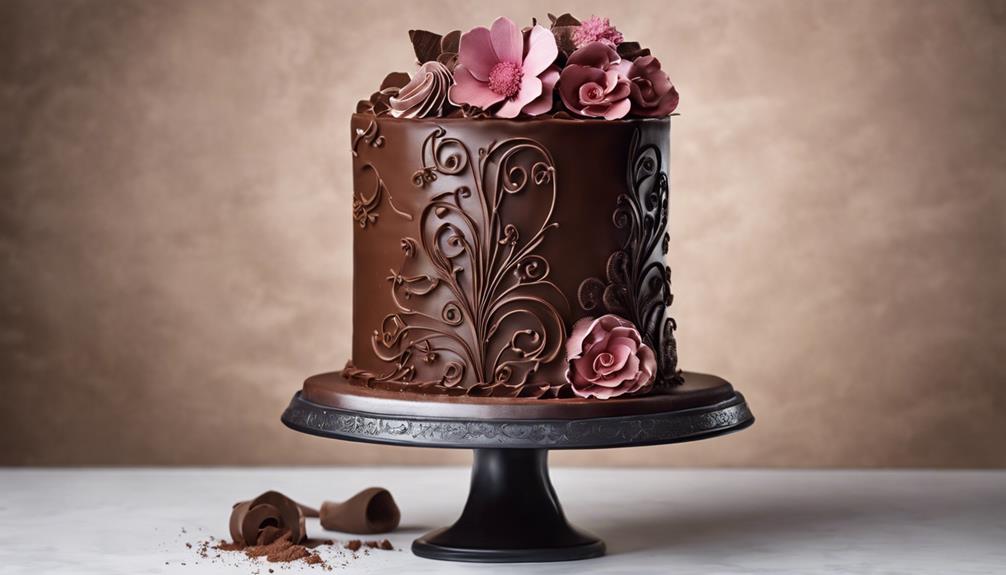As someone who adores everything chocolate, I’ve always been intrigued by how varying temperatures can affect the taste and nutritional benefits of raw cacao powder.
You see, when it comes to cacao powder, heat is a double-edged sword. On one hand, it can enhance the rich aroma and deepen the complex flavors. On the other hand, excessive heat can strip away the valuable nutrients that make cacao powder so sought after.
So, in this article, we’re going to dive deep into the world of raw cacao powder and explore the effects of different temperatures on its quality.
From low heat to high heat, we’ll uncover the best ways to preserve the nutritional value and maximize the flavor of your cacao powder.
So grab a cup of hot cocoa and join me on this journey of heat and flavor.
Key Takeaways
- Experiment with different temperatures to find the optimal heat for raw cacao powder
- Lower temperatures (around 110°F) preserve the natural flavors of cacao powder
- Slightly higher temperatures (around 120°F) bring out a richer flavor
- Use a thermometer to ensure accuracy and avoid overheating, which can result in a bitter taste
Understanding the Composition of Raw Cacao Powder
Let’s take a closer look at what makes raw cacao powder so special. Raw cacao powder is made by cold-pressing unroasted cacao beans. This process helps retain its natural enzymes and nutrients. Unlike cocoa powder, which undergoes high-temperature processing, raw cacao powder retains its health benefits. It is rich in antioxidants, minerals, and flavonoids. These compounds have been linked to various health benefits, such as improved heart health, reduced inflammation, and enhanced mood.
In addition to its nutritional value, raw cacao powder contains theobromine, a natural stimulant. Theobromine provides a gentle energy boost without the crash associated with caffeine. It also contains anandamide, a neurotransmitter often referred to as the ‘bliss molecule.’ Anandamide can promote feelings of happiness and well-being.
Now, let’s explore the impact of heat on the flavor and aroma of raw cacao powder.
The Impact of Heat on Flavor and Aroma
The impact of heat on flavor and aroma is a crucial aspect to consider when working with cacao powder. The temperature at which you heat the raw cacao powder can greatly influence its final taste and aroma. Here are four key impacts of heat on raw cacao powder:
-
Impact on Color: Heating cacao powder can cause it to darken in color, potentially indicating changes in flavor and altering its visual appeal.
-
Effects on Texture: High temperatures can cause cacao powder to clump or become gritty, affecting the smoothness and mouthfeel of your final product.
-
Flavor Development: Controlled heating can enhance the natural flavors of cacao powder, unlocking a rich and complex taste profile.
-
Aroma Enhancement: Gentle heating can release the aromatic compounds present in cacao powder, intensifying its enticing scent.
Understanding the impact of heat on flavor, texture, color, and aroma of raw cacao powder is essential for achieving the desired sensory experience.
Moving forward, we will delve into the topic of retaining nutritional value at different temperatures.
Retaining Nutritional Value at Different Temperatures
When it comes to heating your beloved cacao powder, let’s uncover the secrets to preserving its nutritional goodness at different temperatures.
The way you heat your cacao powder can have a significant impact on its nutrient retention. Certain heating methods can result in the loss of essential nutrients, while others can help maintain its nutritional value.
Studies have shown that high heat can degrade the antioxidants and beneficial compounds found in raw cacao powder. However, using low heat methods, such as gentle heating or slow roasting, can help retain more nutrients. These methods allow the cacao powder to be heated without reaching temperatures that cause significant nutrient loss.
Understanding the effects of low heat on cacao powder will help us delve deeper into its potential benefits.
The Effects of Low Heat on Cacao Powder
To fully savor the benefits of your beloved cacao powder, let me show you how low heat can work its magic and help retain its nutritional value.
When it comes to the effects of high temperature on cacao powder, it’s crucial to understand that excessive heat can lead to nutrient loss. However, by using low heat methods such as gentle roasting or slow drying, you can minimize these effects and preserve the nutritional integrity of the cacao powder.
Studies have shown that compared to other heating methods, low heat techniques retain higher levels of antioxidants, vitamins, and minerals in cacao powder. This means that even after processing, your cacao powder can still provide you with a healthy dose of essential nutrients.
So, by opting for low heat methods, you can ensure that your cacao powder remains a nutritious addition to your diet.
Now, let’s explore the benefits of moderate heat and how it can further enhance the qualities of cacao powder.
Exploring the Benefits of Moderate Heat
Moderate heat, when applied appropriately, can unlock hidden flavors and aromas in cacao powder, elevating your culinary creations to a whole new level. Cooking cacao powder at a moderate temperature allows the natural compounds to release slowly, resulting in a richer and more complex taste profile.
This cooking technique also enhances the smoothness and creaminess of the powder, making it perfect for indulgent desserts or velvety hot chocolate. Additionally, moderate heat helps to reduce any bitterness or acidity that may be present in raw cacao powder, resulting in a more balanced and enjoyable flavor.
It is important to note that the duration of cooking should be carefully monitored to prevent burning or overcooking, as this can negatively impact the taste and texture.
Transitioning to the subsequent section about high heat and its effects on cacao powder, it is crucial to understand the potential risks and benefits of cooking at higher temperatures.
High Heat and its Effects on Cacao Powder
Heating cacao powder at higher temperatures may result in a loss of delicate flavors and a less nuanced taste profile. Temperature experiments have shown that when cacao powder is exposed to high heat, its chemical composition can be altered, leading to a change in flavor and overall quality.
The heat can cause the natural oils in the cacao powder to oxidize, resulting in a bitter and burnt taste. Additionally, high heat can also break down the antioxidants and other beneficial compounds present in the raw cacao, diminishing its health benefits.
Therefore, it is important to be mindful of the temperature when using cacao powder in cooking or baking to preserve its unique flavors and nutritional properties.
Transitioning into the subsequent section about the role of temperature in baking with cacao powder, it is crucial to understand how different temperatures can affect the final outcome of the baked goods.
The Role of Temperature in Baking with Cacao Powder
Baking with cacao powder, how does temperature affect the mouthwatering richness of chocolate desserts? The role of temperature in cacao fermentation is crucial for achieving the desired flavor and quality of cacao beans. Different temperatures during fermentation can result in distinct flavor profiles in the final product. For instance, higher temperatures can lead to a more acidic and fruity taste, while lower temperatures can produce a milder and nuttier flavor. Additionally, temperature also plays a significant role in the quality of cacao beans. Excessive heat can damage the delicate cocoa butter, leading to a loss of aroma and texture. Therefore, it is essential to carefully control the temperature during the fermentation process to ensure optimal flavor and quality.
| Temperature | Flavor Profile | Bean Quality |
|---|---|---|
| High | Acidic, Fruity | Decreased |
| Medium | Balanced | Optimal |
| Low | Mild, Nutty | Decreased |
Understanding the impact of temperature on cacao powder is crucial for creating delectable chocolate treats. Now, let’s move on to the next section and explore some tips for properly heating cacao powder.
Tips for Properly Heating Cacao Powder
To ensure a perfect chocolatey consistency, it’s important to gently warm your cacao powder without overheating it. There are several heating techniques you can use to achieve this.
One method is to warm the cacao powder in a double boiler, which involves placing a heatproof bowl over a pot of simmering water. This indirect heat will melt the powder gradually, preventing it from burning or becoming clumpy.
Another technique is to use a low heat setting on your stovetop or microwave. This allows for a slow and even heating process, ensuring that the cacao powder retains its maximum flavor.
By using these heating techniques, you can unlock the full potential of your raw cacao powder.
In the next section, we will discuss the conclusion: finding the perfect temperature for your cacao powder.
Conclusion: Finding the Perfect Temperature for Your Cacao Powder
When it comes to unlocking the full potential of your cacao powder, finding the sweet spot for warming it is like discovering the perfect temperature for a cup of hot cocoa on a chilly winter’s day.
The optimal temperature for heating raw cacao powder varies, and it’s important to experiment with different temperatures to find what works best for you.
Some people prefer a lower temperature, around 110°F, to preserve the raw and natural flavors of the cacao. Others find that a slightly higher temperature, around 120°F, brings out a richer and more intense flavor.
It’s all about personal preference and taste. Remember to use a thermometer to ensure accuracy and avoid overheating, as excessive heat can lead to a bitter taste.
So go ahead, experiment with different temperatures and find the perfect warmth for your cacao powder.
Frequently Asked Questions
How does the composition of raw cacao powder affect its flavor and aroma?
The composition analysis of raw cacao powder directly impacts its flavor profile and aroma. Factors such as the ratio of cocoa solids to cocoa butter, the presence of any additives, and the processing methods used all play a role in determining the taste and scent of the powder.
Can the nutritional value of raw cacao powder be retained at high temperatures?
The nutritional value of raw cacao powder may be affected by high temperatures. Heat can impact the retention of nutrients in the powder, potentially reducing its overall nutritional content.
What are the effects of low heat on the texture and quality of cacao powder?
Low heat can have a significant impact on cacao powder texture and quality. It can cause the powder to clump and lose its smoothness. A study found that at temperatures below 110°F, cacao powder retains its texture and quality.
Are there any benefits to using moderate heat when working with cacao powder?
There are several benefits to using moderate heat when working with cacao powder. Moderate heat can help enhance the flavor and aroma of the powder, improve its solubility, and make it easier to incorporate into recipes.
How does high heat affect the overall quality and taste of cacao powder in baking?
High heat can negatively impact the overall quality and taste of cacao powder in baking. The flavor can become bitter and burnt due to the high temperatures, leading to a less enjoyable culinary experience.
Does the Temperature of Raw Cacao Powder Affect What I Can Make with It?
Yes, the temperature of raw cacao powder can affect what you make with it. Using raw cacao powder in recipes that require heat can alter its flavor and nutritional content. However, there are plenty of no-bake raw cacao powder recipes that maintain its health benefits and rich taste.
Conclusion
In conclusion, after thoroughly examining the effects of different temperatures on raw cacao powder, it is clear that finding the perfect balance is crucial.
While low heat may preserve the nutritional value, it may not necessarily bring out the desired flavors.
On the other hand, high heat may alter the composition and diminish the benefits of cacao powder.
So, dear readers, when it comes to your cacao powder, tread carefully on the path of heat.
Remember, the perfect temperature is like finding the perfect partner – a delicate dance that requires patience and precision.


